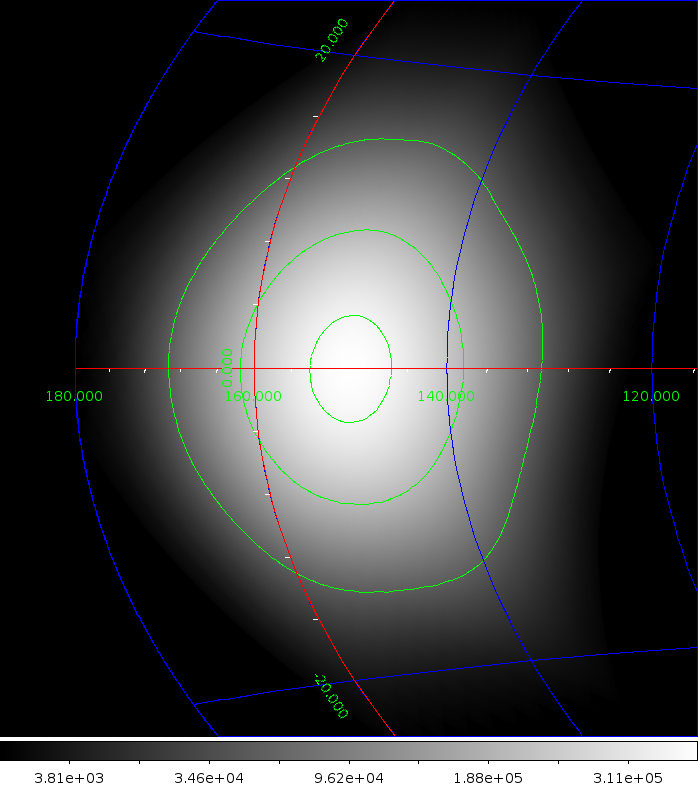Proposal Details - 1020022
Deep Perseus spiral arm Survey: an INTEGRAL must (Ubertini)
Proposal Abstract
One of the key investigations so far performed by the INTEGRAL has been the soft gamma-ray GCDE and the GPS, successfully exploited to a depth of better than 1 mCrab in the central region, with unprecedented details due to the >20 Ms exposure on 5x5 squared degree centred on Sgr A*. The basic outcome is a new view of the gamma-ray domain (E>20 keV) confirmed by the discovery, to date, of about 1000 galactic and extragalactic sources. The new INTEGRAL view of the extragalactic soft gamma-ray sky has been complemented by the excellent sky coverage provided by the SWIFT/BAT extragalactic survey. INTEGRAL has still a factor of 10 better sensitivity over the Galaxy plane, due to the about 6Ms average exposure. This is true for the whole plane except for two important regions (called A and B), coincident with the Perseus spiral arms, that are only covered at a level of ~2.5 Ms and ~3.6 Ms (end of AO9). In those regions of relatively low matter density, we will be able to extend our present studies of compact objects through a detailed comparison of the relative populations of all classes of gamma-ray emitting galactic types in the very different environment provided in these outer regions. Finally, this is a unique opportunity to obtain a deep soft gamma ray coverage of the entire GP: an invaluable INTEGRAL Legacy for future high energy studies, and to select key small regions to be studied starting from this year with NuStar. This proposal is designed to reach this goal, thus making a corner stone in the high energy understanding of Galaxy behaviour in the 17-600 keV range. This is a strategic goal in view of the lack of any high energy mission planned in the next decade and in fact it has been identified as a long term legacy in the INTEGRAL extension science case 2010. To achieve this goal we propose to observe the regions at galactic latitude b=0 and longitude of l=225 and 150 degree for a exposure time of 1 Ms and 500 ks respectively. Priority is the region A.
Observation Strategy (Recommended by TAC)
Total of 500 ks performed as a 10 by 5 grid (10 steps in galactic longitude and 5 steps in galactic latitude) centered on (l, b) = (150, 0 degrees) using the standard 2.17 step size between dither points and an exposure time of 2 ks per pointing. Each grid will be shifted from the previous one by a small offset of ~ 0.3 degrees (i.e., COP move philosophy is be used).
Proposal grade: C
Data Rights (Recommended by TAC)
No data rights were granted.
Exposure Map
The exposure maps are in galactic coordinates using the Aitoff projection and units of seconds, and the colour scale is indicated at the bottom. The green lines provide the 50, 200, 350, 500 and 650 ksec contour.
